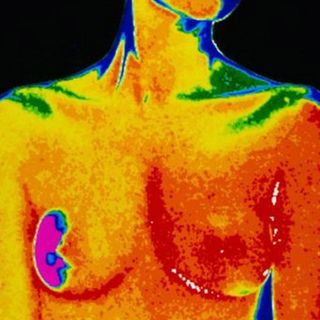
Everything You Want to Know About the MR Vaccine and the GoI Campaign Behind It
The nationwide immunization drive has sparked a lot of fake news.

The GoI’s Measles-Rubella (MR) Vaccination Campaign, which seeks to administer MR immunization via schools, kicked off last year, but it is still making headlines, worrying parents, frustrating schools — and prompting a wave of false information that confuses everyone involved.
In light of the fact that, globally, measles infections have increased by 30% since 2016 because of improper vaccination, and one-third of the world’s measles deaths occur in India — this campaign seems pretty important. Still, parental concern is natural; the most common questions about the MR vaccine, vaccines in general, and the push to administer the MR vaccine in schools, are answered below.
First, the final word: “I strongly recommend that children take these vaccines, and, if parents are panicking too much, the schools should arrange for pediatricians to come and address their issues,” says Dr Jesal Sheth, a consultant neonatologist and pediatric intensivist at Fortis Hospital in Mulund, Mumbai. “This additional MR vaccine is like 100% immunity against the disease. It’s to ensure that not only will you not get it, but you won’t spread it as well.”
What is the MR vaccine?
The MR vaccine is a two-dose injected inoculation that protects against two diseases: measles and rubella. Measles is a highly contagious viral disease that is often deadly; rubella, or German measles, is also a viral disease that, while not typically deadly, can cause miscarriage or severe birth defects if contracted later in life during pregnancy. (Boys and men require immunization because they can transmit rubella to pregnant women.)
The MR vaccine inoculates children — among the most vulnerable to measles infection — against both diseases, for their lifetime. It is the only effective way to prevent the diseases.
Is it different from the MMR vaccine?
Yes. The MMR vaccine is a two-dose injected inoculation that protects against mumps, as well as measles and rubella. If a child has received both doses of an MMR vaccine, there is no need for an MR vaccine. That said — there is also no harm in receiving an MR vaccine after having received complete MMR vaccination. If a child has received an incomplete (single dose) MMR vaccine, receiving the MR vaccine is necessary.
“It’s not the same thing, [but] anyone who has already taken the MMR vaccine should not be afraid of getting another [MR] dose because there’s no harm. The only side effect you will see are fever, or maybe redness [at the injection site], like with any other vaccine,” Dr Sheth says.
The MR vaccine is a live vaccine — does that make it more dangerous?
A live, or attenuated, vaccine works by introducing a live — but significantly weakened — antigen into the human body. They are not more dangerous than vaccines based on killed or ‘inactivated’ antigens, they are just a different mechanism for establishing immunity. (In fact, one of the advantages of a live vaccine is that it prompts longer-lasting immunity.)
That said, live, or attenuated, vaccines should be avoided by anyone with a compromised immune system.
Why is the campaign saying children who have received the MR/MMR vaccine are still getting measles, and therefore, are recommending vaccinated children to get re-vaccinated? Why should kids get vaccinated again, if the vaccine doesn’t work?
The MR (and MMR) vaccine works — but it only works in a single, primary dose for 9 out of 10 children; 1 in 10 children do not acquire full immunity from a single dose, and thus are still susceptible to measles and rubella unless they get a second dose. Unfortunately, there’s no way to know if your child is the 1 in 10 that can still contract measles after receiving a single dose (other than a costly blood test that most don’t have access to).
Which is why a second dose is necessary for all children — it strengthens immunity for those already covered by the initial primary dose, and the re-exposure to the viruses establishes lasting immunity for those who didn’t get it from the single dose. Combined, the MR (or MMR) vaccine doses ensure lifetime immunity to two serious diseases.
Up until 2010, though, the second MR/MMR dose was not required by the Indian government as an essential vaccine, likely due to a cost-benefit analysis; a second dose is essential to only 10% of children, but would require 100% investment, as there’s no way to tell which children really need it. (The two-dose MMR vaccine, which provides lifetime protection against mumps, as well as measles and rubella, has long been recommended by the Indian Academy of Pediatrics, however.)
Because of that, while the country-wide coverage of the primary MR dose stands at a (relatively) respectable 83 to 90% of children, actual immunity falls far short. And the country-wide coverage of the second MR dose, which ensures full immunity, stands at only 40 to 66% — far, far short of establishing the lifetime immunity that a double dose grants, at the level of 95% of children, which is when a disease is considered ‘eradicated.’
The aim of the country-wide MR vaccine campaign is to reach 95% of children with the second dose, individually completing their inoculation, and, at the population-level, ‘eradicating’ the diseases from India.
Why does the campaign need to go through my child’s school? Children should get their vaccines through a pediatrician.
In a perfect world, all children would have access to a pediatrician; most do not. This campaign is aimed at ensuring all children get the vaccinations they need in order to thrive, by administering the MR vaccine via the location where children spend most of their time: school.
“The reason the government is doing this is because it wants to eradicate the diseases completely and the only way to do this is to target schools [where most children are],” Dr Sheth says. “We in the metro cities, who can afford everything, are questioning their intention too much. What about [children in] government and municipal schools?”
It is impossible for a campaign to know whether all students enrolled in a school are vaccinated; therefore, the mandate is to vaccinate all children at every school.
What happens if a child only gets the single, primary MR/MMR vaccine dose?
For 9 out of 10 children, they will acquire lifetime immunity to measles and rubella (and mumps, in the case of an MMR). For 1 in 10 (10%) children, they will not acquire immunity and may still be susceptible to the diseases. An antibody titer blood test can establish whether your child needs a second vaccine, but it’s far more costly (roughly Rs. 1600 versus free) and painful (requiring blood to be drawn) than just getting the second MR dose.
If a child only gets one dose of the MR vaccine, do they need to start again from the beginning?
No. The second dose is not technically a booster, aimed at reviving waning immunity and dependent on the initial dose; it is literally a second dose of the exact same vaccine, intended as a backup for those in whom the first dose doesn’t establish immunity.
That said, there is no harm in getting a primary and/or a secondary dose of the MR vaccine, even if a child has already had previous doses of an MR/MMR vaccine. Most children (9 out of 10) who complete their vaccine schedule will technically not require a second dose of their MR/MMR vaccine, but it is recommended and received anyway in order to ensure full protection.
If a child has had both doses, are there any downsides to getting re-vaccinated, per the campaign’s recommendations?
There are no downsides or danger to repeating vaccination.
“Irrespective of the fact that the child has taken one dose, there is no harm in taking it again. Even if they’ve taken both the doses, the child can take it again,” says Dr Subhash Rao, a consultant pediatrician at Hiranandani Hospital in Vashi, Mumbai, who calls the government-led campaign “a good initiative.”
My child has only received one MR/MMR dose, but they live in a clean environment. Why would they need a second dose?
Observable cleanliness really has nothing to do with immunity; the measles virus can live for up to two hours, invisible, in the air space where an infected person has coughed or sneezed.
Your child is either one of the 9 in 10 children who will receive full protection from a single dose, or they are the minority who won’t (or they are part of the tiniest minority, the very rare cases where immunity is never established, no matter how many doses) — but the fact that they haven’t contracted measles is not evidence of the former; it’s only evidence of herd immunity. Herd immunity occurs when an unvaccinated or improperly vaccinated person is kept safe from a disease because all of the people around them have been immunized, and thus, will not contract and transmit the infection to them. A lack of personal immunity weakens herd immunity overall, putting an unvaccinated child doubly at risk of contracting a serious, yet preventable, disease.
Article continues below
My child has only received one MR/MMR dose, but afterwards they developed symptoms. Will getting a second dose give them the full disease?
No. Giving them a second dose will establish lifetime immunity. A second dose may bring on post-vaccination symptoms that mimic those of the disease — like soreness, fever, redness, rash, and/or muscle aches — which are common, but they are also not contagious, as they are not indications of the actual disease. These side effects can appear at any point within roughly two weeks after receiving the vaccine; they last for a couple of days and disappear. They can generally be treated at home with over-the-counter medication, with guidance from a doctor.
There have been mismanaged vaccine drives in the past, in India, where vaccines have been improperly stored or misadministered (i.e. an injectable being administered orally), which have led to serious health complications and death. This is not the effect of the vaccine, but of human error or negligence.
So, what is the MR campaign doing to ensure safety?
The MR vaccines used in India’s nationwide campaign are prequalified by the World Health Organization (WHO), which means they’ve undergone “a transparent, scientifically sound assessment, which includes dossier review, consistency testing or performance evaluation and site visits to manufacturers.” There is also a Vaccine Vial Monitor on each dose of vaccine in order to indicate its proper storage and quality.
Is there any alternative that can protect children from measles and rubella as well as the MR/MMR vaccine?
No. No matter what someone promises you, there is literally nothing as effective as a vaccine in preventing disease. Vaccines are not foolproof, because nothing in life is. But taken properly — which means, for the MR/MMR vaccines, two doses — they provide lifetime immunity for roughly 96% of people.
My child is already fully vaccinated against measles and rubella; I am worried that more, unnecessary vaccines will put my child at risk of autism, or overload their immune system.
There are mountains of evidence disproving any link between vaccines and autism. Such a link does not exist; vaccines do not cause autism. Anyone who says they do is selling you fake news. Immune system overload from vaccines is also not a thing.
But don’t vaccines contain thimerosal, a preservative that contains mercury? And that at least contributes to autism, right?
Wrong. First, MR/MMR vaccines do not contain and have never contained thimerosal (also spelled thiomersal). (No vaccines do, anymore, actually — and yet autism still occurs.) And second, there is no link between thimerosal and autism.
There have been a lot of sensational reports lately, of children getting sick after being vaccinated and being sent to the hospital. Is this related to receiving the MR vaccine?
Again, post-vaccination symptoms (including soreness, fever, redness, rash, and/or muscle aches) are common, and typically develop within two weeks of receiving the vaccine, but they are no indication of disease and they will pass. They can likely be treated at home using over-the-counter medications, with guidance from a doctor.
If your child is experiencing a more severe health problem, it is likely they are experiencing just that — an unrelated, severe health problem — and they should be taken for care immediately.
(In extremely rare cases, a person receiving an MR vaccine may experience an allergic reaction or seizure; it is unlikely your child will experience this after vaccination, but if you are worried, consult your pediatrician for guidance and/or to arrange for emergency care to be quickly accessible.)
In the past, there have been reports of children becoming sick and even dying after vaccine trials in India. These isolated trials have typically been poorly conducted, have improperly stored the vaccine, or have misadministered the vaccine (i.e. administered an injectable vaccine orally).
But the government has a poor track-record of administering vaccines. Didn’t they just administer a contaminated version of the polio vaccine that put everyone at risk of contracting an eradicated form of the polio virus?
The government administered an outmoded — but still effective — version of a polio vaccine. It’s evidence of negligence on the part of the manufacturer (and a need for stricter regulation). But no children were endangered. The involvement and quality-assurance of the WHO in the MR vaccine campaign is aimed at preventing any similar mistakes.
Anubhuti Matta contributed reporting to this article.
Liesl Goecker is The Swaddle's managing editor.
Related


New Research Finds Pregnancy Offers Little Protection Against Breast Cancer Risk
